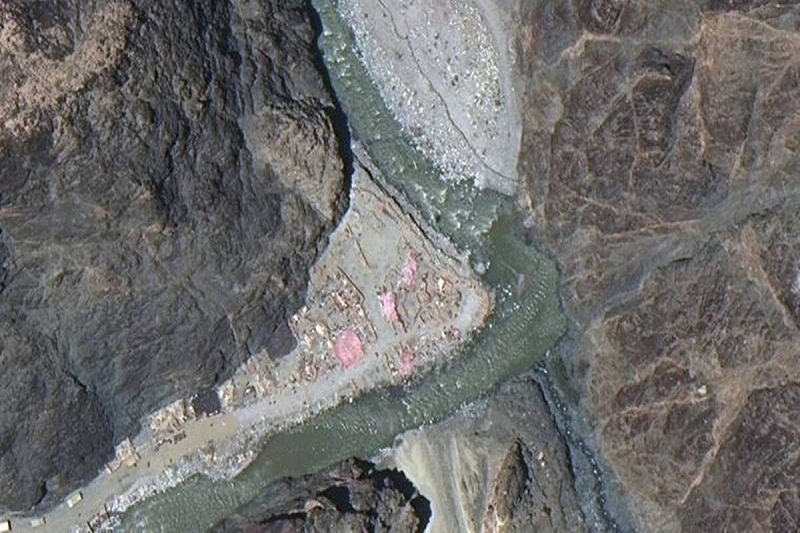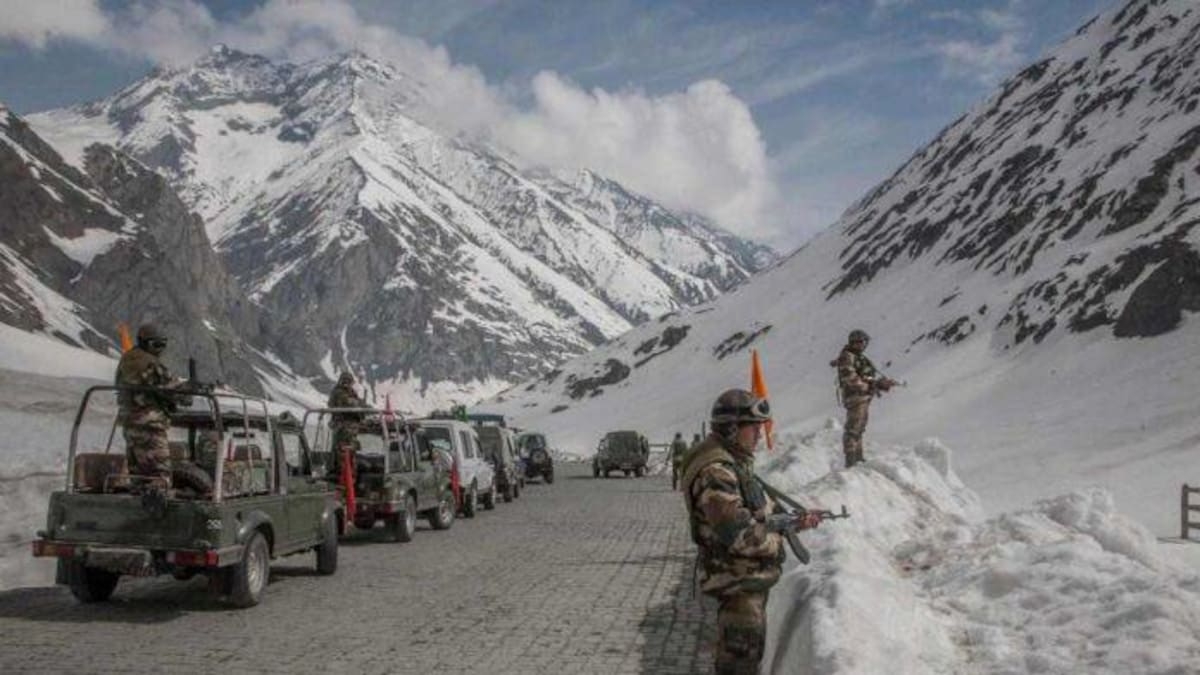Himalayan Blunder 2020

The Galwan Valley
On 06 May 2020, the People’s Liberation Army (PLA) launched physical Military Incursions at several locations across the LAC. Both sides reinforced their positions with tens of thousands of Troops, Tanks, Armored Personal Carriers, Missiles, Anti-Aircraft Guns and Fighter Bomber Aircrafts.
This was followed by building up of suitable Infrastructure to sustain a long presence through approaching winter. Chinese tried to change the LAC by force, with few apparent options for resolution. This saw an escalation in tension after a skirmish in the Galwan Valley.
India and China have endured number of tense standoffs since Chinese aggression in 1962, but this was first casualty on LAC since 1975. On 29/30 August, Indian Forces occupied Tactically Important Peaks on Kailas Range near Chushul on Indian side giving us Significant Military Leverage in resolution of this crisis.
China either neglected those peaks out of strategic ignorance or sheer military lethargy or confidence that Indian Army cannot think of/is incapable of taking such step or euphoria that their bold actions will demoralize Indian Army so much that it will accept it as faith accomplice as was done in 1962. Why, God only knows.
This omission hurt China so much that as a result, couple of senior/middle level heads in PLA rolled unceremoniously. Resultantly, tensions soared. Infuriated China then launched Cyber Attacks against Indian Civilian Infrastructure. Both countries were absolutely on the brink of war. If action/ initiative taken in early 1962 was a Himalayan Blunder for India, so was this omission for China in 2020 when, in spite of initial shouts of bravado, she had to agree for a withdrawal.
Since early 2020,China has been blaming India for “Attempting to unilaterally change Status Quo of Border Territory” as Chinese Strategic Interests are/were deeply hurt/affected by recently-completed Darbuk to Shyok to Daulat Beg Oldi Road which provides ground access to Sub sector North in Northern Ladakh.
Near the Galwan Valley, this road is dominated by a spur running from road towards LAC. China occupied this spur in early stages of incursion. Due to this domination, China showed no signs of reversing her incursions for over eight months. But she made a La 1962 type, Out of Blue Announcement of a Phased Disengagement Plan in February, 2021. This disengagement is held up because of Chinese stubbornness.
What will be future trajectory of this crisis remains unclear.
Chance is that this disengagement may proceed “As Intended”, resulting/leading to New Dispositions on Ground and Procedures for managing LAC. Or else, if disengagement does not materialize as intended, India and China may engage in Open War. Alternately, crisis may keep India and China, perpetually close to conflict with every row at LAC becoming root cause of an unstable relationship.
If this happens, China will continue to develop significant New Military Capabilities near/operationally close to LAC, as per her National Rejuvenation Policy. In all three eventualities, along with this step, China will continue to expand her Military Footprint in Indian Ocean Region (IOR) to project herself as Mighty Maritime Power.

To counter all these, India will have to balance her Strategic Priorities on Land and At Sea which would be a state of an acute crisis in our Defence Policy. Answer to this lies in analysis of options open to us for future:
One: War Doctrine of Indian Army stipulates/calls for Deterring of Adversaries with threat of a Massive Punitive Retaliation for any Aggression and Capturing Enemy Territory as bargaining leverage in Post War Talks. China, without paying any heed to it, launched unprecedented incursions in May 2020 in Ladakh. But Indian Army did not retaliate in Conventional Manner, keeping in mind the dictum of Arya Chanakya, “Punishment is Less Effective than Denial against any Highly Resolved Adversary”.
An Act of Denial was High Water Mark of Indian Army in Ladakh the crisis as she occupied the heights on the Kailas Range in late August, 2020. This proved to be paying proposition as PLA was halted Mid Tracks. Therefore, a Doctrinal Focus on Denial will give Indian Army a greater capacity to thwart future Chinese land grabs across LAC.
This shift in Doctrine would require purposeful combination/ coordination of improved capabilities and practices, including more Wide Area Surveillance, better and more efficient/effective Command Structure and well rehearsed/ practiced tactics for Responding to Attempted Incursions.
To achieve this, we will have to bolster our Defensive Positions. Thereafter; rather than launching an Escalatory/Offensive Response, Strategy of Denial would pay more dividends than that of Punishment to Preserve Crisis Stability. Over a period of time, Improved Denial Capabilities may allow India to reduce the resource drain of increased Militarization of LAC. Denial is important not only in Deterring Territorial Aggression, it would be equally important for/essential to, counter coercion in Indian Ocean. Our future Military Strategy to counter coercion must be based on Policy of Denial and not of Punishment where China is involved.
Two: As on date, the way Ladakh Crisis is resolving, serves our National Security Interests as disengagement to lines approximate “Status quo Ante”. This has happened because Beijing has responded to Prospect of Intolerable Political Costs. China is not bothered about Loss of life or Material Costs as is clear from Sino Vietnam Conflict.
She has both in abundance. India realized this and successfully raised the risks of the crisis through her threat of a Political Rupture and not Military Punishment. With advent of Corona and its accusing finger pointing towards China, escalation of crisis was deemed to be an unnecessary additional burden while it was contending with a generally unstable and unsuitable International Environment.
Permanently hostile India/ accidental escalation to conflict were risks that China, having achieved its goals in the crisis, was averse to take. India has learnt in a bitter way that she alone cannot shift Beijing’s calculus.
Support of America, Australia, Japan and other Western/Eastern Countries seemed to be the turning factor. China responded to the cumulative effect of multiple pressure points. In case of China, this will be true in future too as only coordinated or collective action is likely to be effective. Therefore, to coerce China, India will have to Prioritize, Coordinate and Impose Political Cost over China as Material Costs are not worthy of her consideration.
Three: Ladakh crisis has ushered in a new strategic reality of Increased Militarization of LAC. This in turn will shift the balance of power in IOR. To counter this, India will be required to Strategic Trade Off between prioritizing Defence Modernization/Joint Force Projection and/over retaining of Ground Centric Combat Arms Formations to operate on Northern Borders. Hence, the need of converting to Integrated Battle Group (IBG) Concept advocated by Chief of Defence Staff (CDS).
Consolidation of influence in IOR may come at the price of accepting more ground incursions on Northern Borders. Present Government, CDS and three Service Chiefs will have to take that tough decision and thereafter issue firm Strategic Guidance to Services.
Since such a decision will directly affect National Security, it would be a Litmus Test of/for Strategic Sense and Far Sightedness of those who matter. Without such decision by a bold Leadership, India will have to face series of crises due to Defence Forces facing/suffering loss of inertia. Therefore in future, we will have to/will be forced to accept More Risk at LAC for attaining long term Leverage/influence in IOR.
Four: Last option is to wage a war with China and suffer economic slide and set back of progress at least by five to ten years. This will directly affect Indian Role in IOR. Security of IOR requires a strong and powerful India. For QUAD comprising of America, Australia and Japan; IOR is vital, yet secondary to South East Asia and Western Pacific, being their primary interests. They will support India against China only if she can counter balance Military Expansion of China in IOR. If India has to focus on land borders with China, she would be unable to devote increased resources to IOR.
If in view of Available Tangible Resources, we have to opt for/adopt a Central Strategic Legacy of heavily militarized and violence prone LAC over increase of influence in IOR while dealing with China, we will have to keep in mind, Lessons drawn from Chinese Incursion in Ladakh to further our Strategic Competition with China. These are based on material available in Print Media/Inter Net and are summarized a under:
A) During present crisis, China has achieved Intelligence and Operational Trickery by Multiple Incursions/Intrusions from Depsang to Demchok. By doing this, she has Promulgated 1959 Claim Line more to the West than actual in Eastern Ladakh. She also has been able to create a buffer zone at Depsang by blocking our Patrolling Routes at Bottleneck and Y Junction on that route. As on date, she has refused to vacate these positions.
B) Primacy of Chinese Threat in comparison to Pakistan has finally been accepted by our Thinkers/Planners. This would enable us to rebalance our Forces and Strategic Reserves across new Front. This will also minimize future Pakistani Challenge.
C) By intruding initially and vacating only “Suitable to her” places, China has effectively reiterated/demonstrated her classic policy of “Two steps forward, one step back”.
D) Delayed Force Deployment by India and refusal to use Kinetic Force to Counter Present Chinese Intrusions has resulted in “Failed Total Vacation” by PLA as was achieved in Depsang (2013), Chumar (2014) and Doklam (2017).
E) Indian Politico-Diplomatic Efforts to resolve this crisis has borne little fruits. No one can have Normality in Bilateral Relations while amassing Troops along the border as was done first by China and subsequently followed by India.
This is where Galwan Crisis stands today. India is constrained by Chinese stubborn attitude, very cautious support/promises of support by remaining QUAD countries and dictum to “fight with whatever you have”. Indian Army is braving the oddities of harsh winter in Ladakh in contrast to frequent Troops Rotation by PLA/China. It is a drain on resources of Indian Army being an oft repeated gimmick by PLA/China.
It’s a time for rational and tough decisions at National Level and we better take it quickly than shun it.
